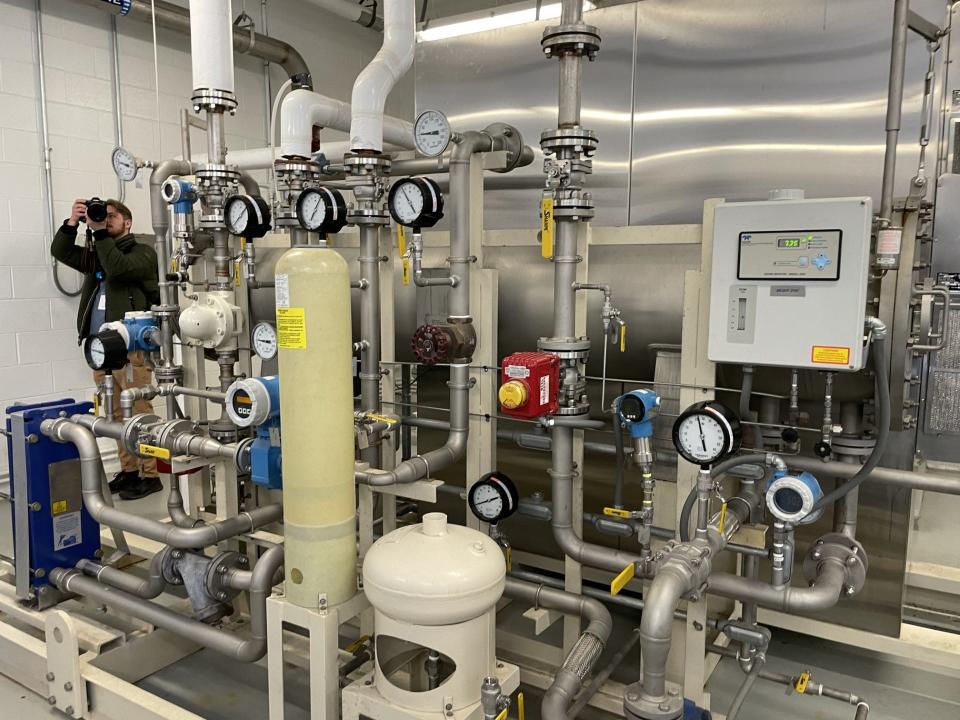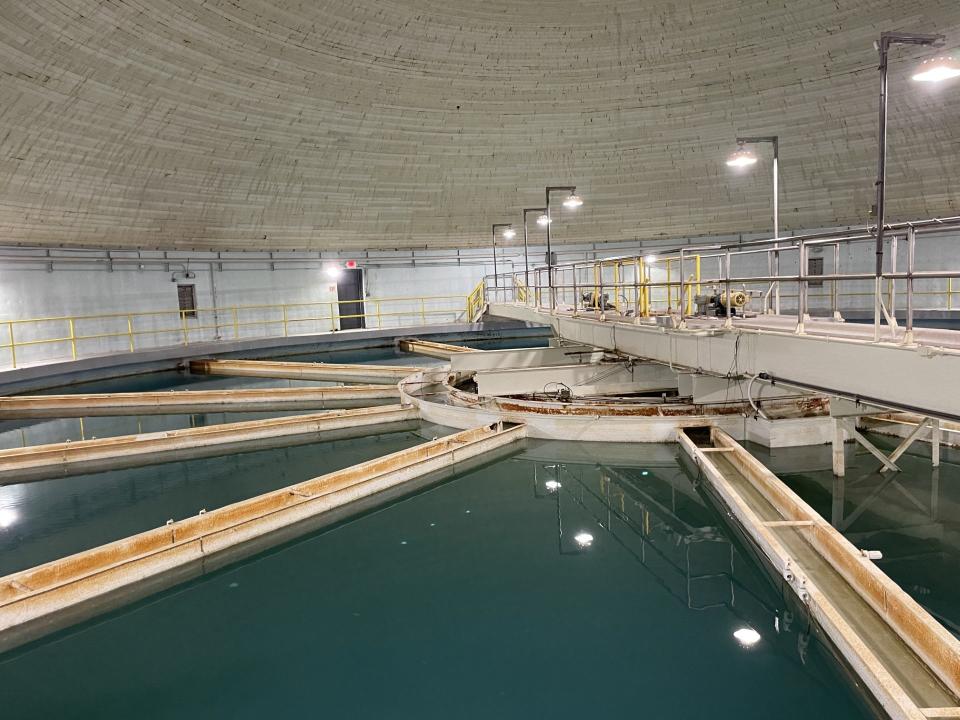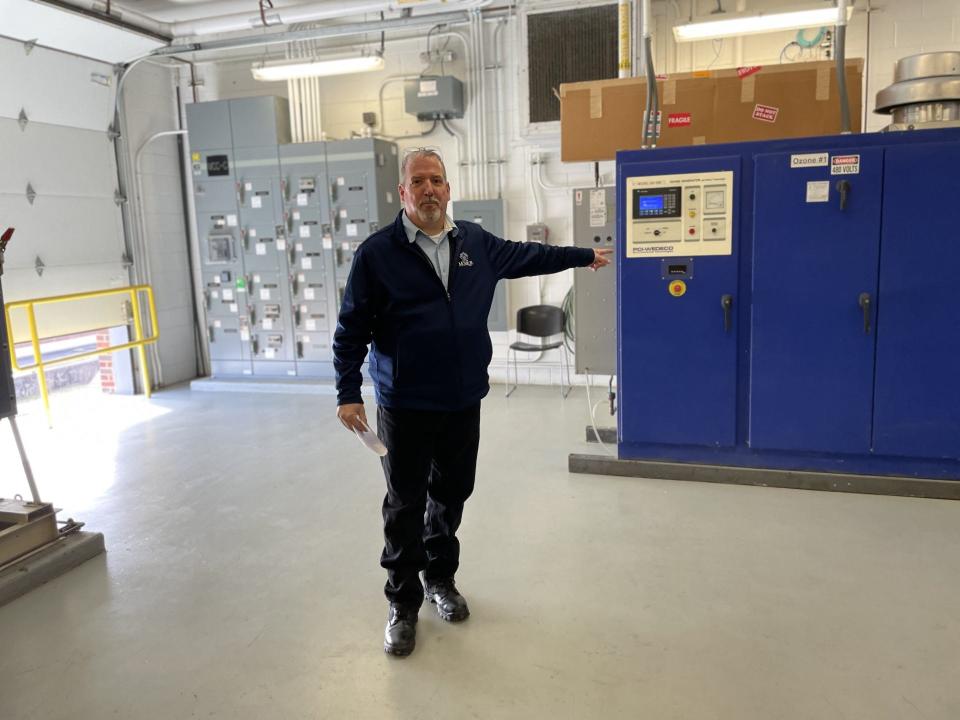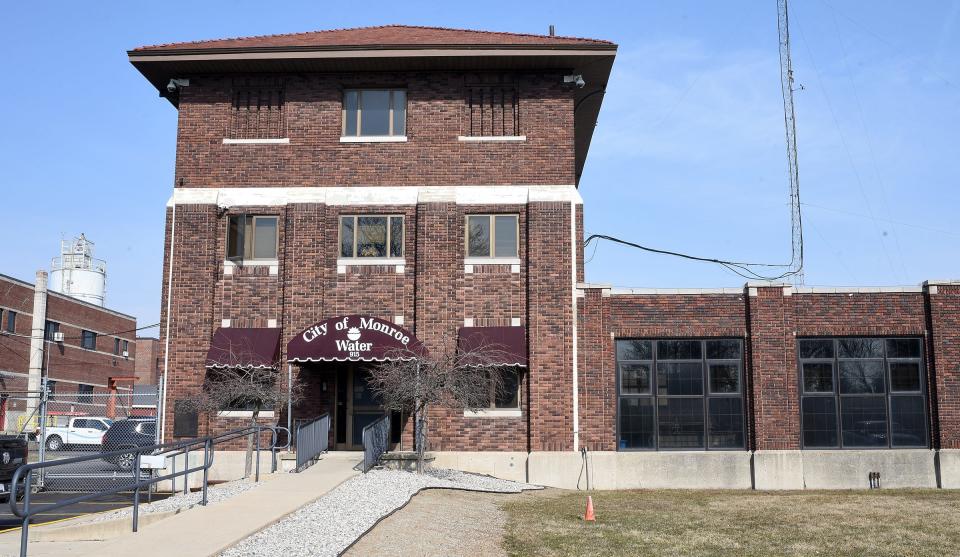Here's what it's like inside the oldest continuously running water plant in Michigan
MONROE — Before the tour ended, Christopher S. Knight made a point to shout out, “Happy Birthday, water plant!”
Friday was the 100th anniversary of the City of Monroe's Water Treatment Plant on East Front Street, which has been in operation since March 1, 1924. To mark the occasion, the city offered hourly public tours, anniversary booklets and decorated cookies.
Before the tour started, Barry S. LaRoy, the city's director of water and wastewater, said it was a “real honor” to celebrate the anniversary. LaRoy has worked for the City of Monroe for nearly 32 years, more than 1/3 of the plant’s life. He said the facility is the oldest continuously running water plant in Michigan. The city is applying for a historical marker from the state.

Previous Coverage: Public can tour 100-year-old Monroe Water Treatment Plant Friday
Dozens, including many children, turned out for the tours led by Knight, water plant superintendent. Knight has worked at the plant for almost 30 years and has been its superintendent since 2009. The tours followed the path the Lake Erie water takes through the plant, including the ozonation building and the clarifier.
Knight said in 1924, this area had fewer citizens and businesses, so the plant pumped just 3 million gallons of water today. Today it's pumping 18 million gallons a day, slightly less in winter months, when there are no swimming pools and sprinklers in use. In 100 years, the plant's treated more than 85 billion gallons of water, which is 2 percent of Lake Erie.

Ozone has been used in the water treatment process since the 1970s. Ozone helps remove pathogens and bacteria from water.
Next, Knight led the tour into the domed-topped Clarifier 3 building, which was constructed in 1972. Here, 10 million gallons of water a day are treated. The plant has three clarifiers, or giant tubs, where 95 percent of dirt is removed from the water. The water in the tubs is kept at 41 degrees. In harsh winters, like 2014-15, a thin layer of ice can form on top of the water.

“It doesn’t hurt the treatment,” Knight said.
Chlorine is added to the water after clarification. Water’s final stop is the filter gallery, which wasn’t on the tour. Today, the plant has 12 filters. Charcoal makes up most of the filter; silica sand and garnet sand fill up the rest.
“What participles are left (from the clarifier) get out in the filter. This is the polishing. It removes any particles,” Knight said.
Outside, Knight gave tour attendees more water facts and answered questions.
He said the city adds two chemicals to water: fluoride and the corrosive inhibitor called zinc orthophosphate.

Fluoride is recommended by the American Dental Association and the Environmental Protection Agency.
“There is not adequate levels in the water. We started Dec. 5, 1951, at the request of city council. It helps enamel, strengthens teeth and prevents cavities,” Knight said.
The corrosive inhibiter prevents lead and copper from older pipes from leaching into water.
“Water sits between the line and the main. At night, it could be six to seven hours,” Knight said.
Homes that have water pipes from before 1945 can have them inspected and/or replaced free by the city. To learn more, call 734-384-9150.
Various tests are performed on the water in the plant; some are done every hour. Checks also are performed weekly throughout the county.
“What good would it do if the water was good here and left here and went bad?,” Knight said.
The city has three water towers. The one in Monroe's Roessler Field holds ½ million gallons of water. Towers in Ida and Maybee each hold ¼ million gallons. Although the towers store water, their most important job is to maintain water pressure.

“Without them, pressure would be up and down all the time. It balances the system,” Knight said.
The Monroe Water Treatment Plant serves 12 communities. The impetus for the plant was the 1915 typhoid fever outbreak. LaRoy said homes back then had private wells that were often too close to outhouses.
Subscribe Now: For all the latest local developments, breaking news and high school sports content.
“There was no treatment and no wastewater treatment,” LaRoy said.
Because of contamination, more than 44 typhoid cases occurred among the population of 12,000 people.“It was massive hysteria,” LaRoy said.
So, the city built the water treatment plant that’s still in operation today. Major expansions took place in 1948 and 1972. LaRoy said the city is always working on water infrastructure. Plans this year include expansion of the South Custer Booster Station.
"An additional pump is required for the station to meet firm capacity," LaRoy said. "This project requires a building expansion, and we will be replacing the emergency backup generator at the same time. The project has already started and is just east of the Monroe County Fairgrounds property."
— Contact reporter Suzanne Nolan Wisler at swisler@monroenews.com.
This article originally appeared on The Monroe News: Monroe water plant marks 100th anniversary with public tour

